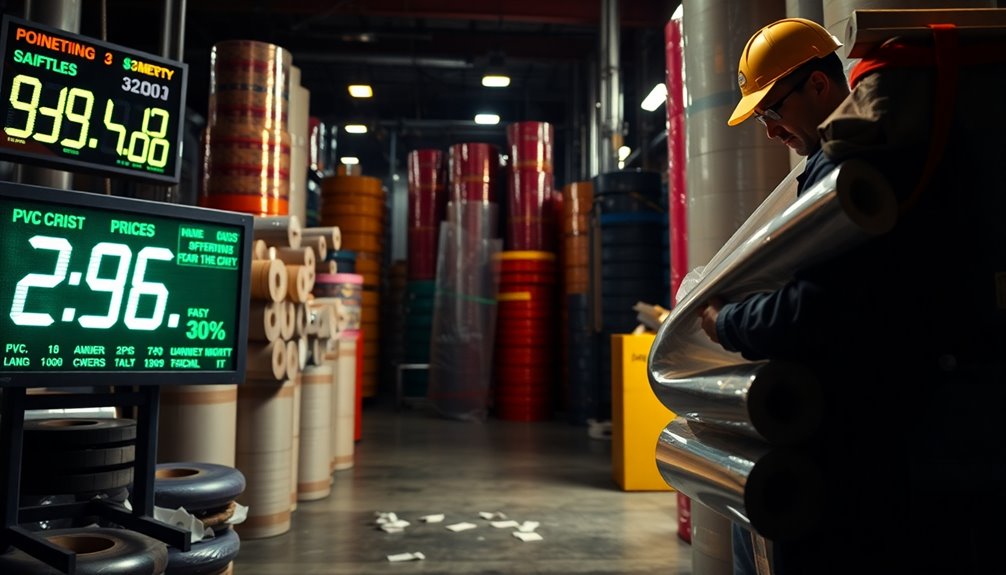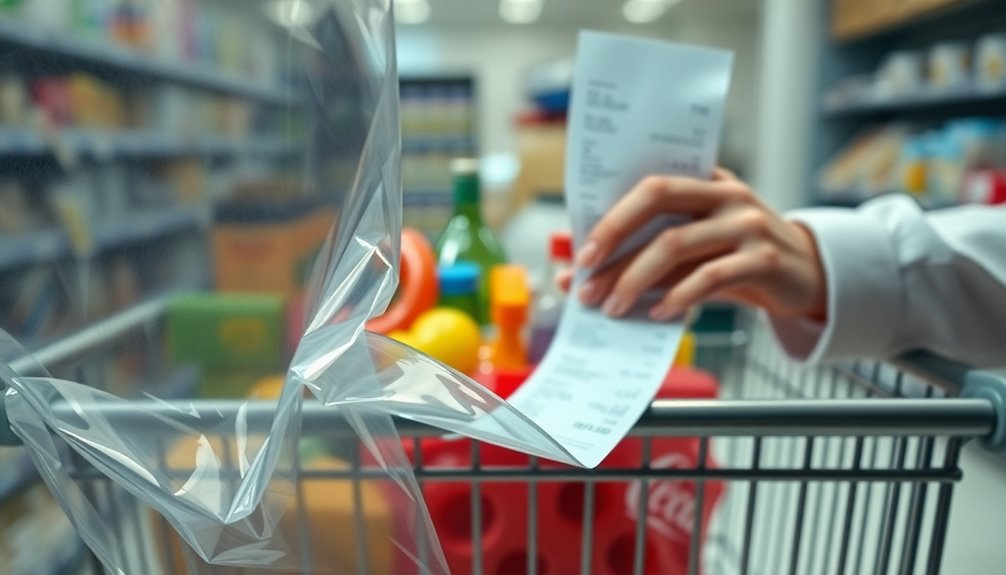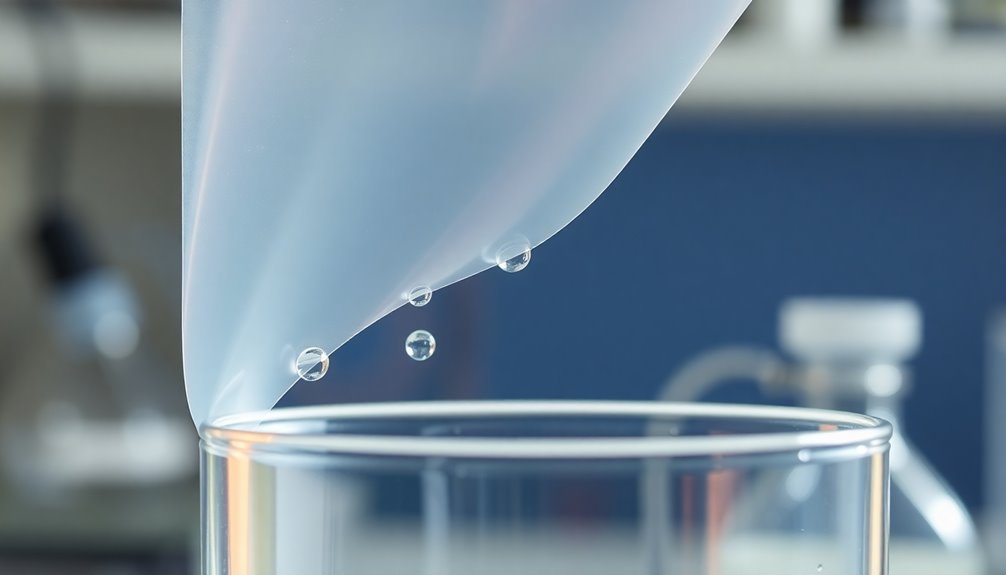PVC film prices are on the rise, largely due to limited global supply and production issues in key facilities. As export prices hit $800 per metric tonne, you might wonder if you're paying too much for this everyday material. Demand for PVC is projected to grow, impacting pricing stability further. While rising costs can feel burdensome, alternative materials like polypropylene and bioplastics offer eco-friendly options, which might help you save in the long run. If you're curious about how these factors influence the PVC market and your wallet, there's more to discover about this ongoing price shift.
Key Takeaways
- PVC film prices have surged due to a $60/tonne increase in PVC export prices, now reaching $800/metric tonne.
- Supply constraints from reduced Chinese exports and operational issues at US plants are contributing to higher prices.
- Anticipated growth in domestic PVC demand over 5% by 2025 may further drive pricing volatility.
- Environmental concerns regarding PVC's production and low recycling rates raise questions about its long-term sustainability and value.
- Cost-effective alternatives like polypropylene, PET, and bioplastics offer competitive options, potentially challenging PVC's market position.
Rising PVC Costs Impact Consumers

As PVC prices continue to rise, you might start feeling the pinch in your wallet. Recently, PVC export prices in the US surged by $60 per metric tonne, hitting $800 for the first time since September 2023. This spike results from tighter global supply and ongoing freight challenges. While domestic production rates are higher, reduced exports from Chinese producers and operational issues at the Orbias Altamira plant in Mexico keep supply tight.
You should also be aware that seasonal factors and buyer anticipation of price drops contribute to price volatility. Many consumers are delaying spot purchases, unsure of what the market will do next. With domestic PVC demand expected to grow over 5% in 2025, the cautious outlook regarding the housing market may further impact pricing stability.
Additionally, anti-dumping duties and import taxes imposed by various countries create extra hurdles for US PVC exporters. These challenges can lead to higher prices, which ultimately affect you as a consumer. As these costs climb, it's crucial to stay informed and consider how rising PVC prices may influence your everyday purchases.
PVC Price Trends Overview

Rising PVC prices have set the stage for significant market trends that consumers need to understand. Recently, US export prices surged from $720-730 per metric tonne in early May 2024 to $800 per metric tonne, marking a notable high not seen since September 2023. This increase is largely due to supply constraints, stemming from reduced exports by Chinese producers and maintenance issues at US plants, which have tightened the overall PVC supply.
Additionally, the force majeure situation at Orbias Altamira PVC plant in Mexico has intensified these supply challenges. Despite an uptick in domestic production, global supply remains affected, as US producers face competitive pressures from their European counterparts and various anti-dumping duties.
Economic forecasts suggest that domestic PVC demand is set to grow over 5% by 2025, yet cautious buyer expectations may stall market confidence, particularly due to anticipated slowdowns in the housing sector. Understanding these pricing dynamics will be crucial as you navigate the market, especially with PVC prices expected to fluctuate based on supply and demand factors in the coming months.
Cost-Effective PVC Alternatives

In today's eco-conscious market, cost-effective PVC alternatives are gaining traction as businesses and consumers seek sustainable solutions. Polypropylene (PP) and polyethylene terephthalate (PET) stand out for their superior recyclability and reduced emissions compared to PVC, making them more environmentally friendly options for various applications.
Paper-based alternatives are another great choice; they're renewable and compostable, perfectly catering to the growing demand for sustainable packaging. Polylactic acid (PLA), derived from renewable plant sources, is biodegradable and ideal for food packaging, providing a viable substitute for conventional PVC materials.
If you're looking for innovative options, consider wool felt. It offers natural water resistance and insulation properties, making it an excellent eco-friendly alternative for clothing and crafts. Additionally, bioplastics, crafted from renewable biomass, present a forward-thinking choice suitable for diverse applications, aligning with the increasing trend toward sustainability.
Environmental Impact of PVC

While cost-effective alternatives to PVC are gaining popularity, it's important to consider the environmental impact of PVC itself. The production of PVC involves harmful chemicals, notably chlorine and dioxins, which can severely affect the environment. When PVC products degrade, they release toxic additives like phthalates and lead, posing risks to both wildlife and human health.
Since PVC isn't biodegradable, it contributes significantly to landfill pollution and ocean waste, where it can persist for hundreds of years. This long-lasting plastic waste adds to the growing concerns about our planet's health. Recycling rates for PVC remain strikingly low—only about 10% of PVC products are recycled—making the situation worse and highlighting the need for better environmental regulations.
Moreover, the production of PVC relies heavily on fossil fuels, contributing to greenhouse gas emissions and exacerbating climate change. As you weigh the costs and benefits of PVC, keep in mind that its environmental footprint is substantial, affecting not just ecosystems but also the quality of life for future generations. Making informed choices about materials can lead to more sustainable practices and help mitigate these environmental impacts.
Industry-Specific PVC Price Impacts

The recent surge in PVC prices is sending shockwaves through various industries reliant on this versatile material. With US export prices rising by $60/metric tonne to $800/t, tighter global supply and freight challenges are at play. While domestic PVC production has improved due to higher operating rates, ongoing limitations still stem from reduced exports, particularly from China. This situation is exacerbated by the force majeure at Orbias Altamira's PVC plant in Mexico, creating uncertainty in the overall PVC market.
As you navigate these changes, it's important to note that domestic PVC demand is expected to grow over 5% by 2025. However, cautious buyer expectations, especially regarding delays in the housing market, could hinder this growth. Furthermore, US PVC exporters face challenges from anti-dumping duties imposed by various countries, complicating market dynamics.
The combination of rising prices, fluctuating supply, and projected demand growth paints a complex picture for industries dependent on PVC. Understanding these factors will be crucial as you adapt to the realities of this evolving market, ensuring you remain responsive to the challenges ahead.
PVC Prices Affect Daily Expenses

Recent increases in PVC prices are directly impacting your daily expenses, especially if you rely on PVC products for various applications. With recent export prices skyrocketing by $60 per metric tonne, reaching $800 for the first time since September 2023, these costs are likely to trickle down to you, the consumer. The supply chain challenges, including reduced exports from Chinese producers and force majeure events, have tightened global supply, driving up production costs.
As domestic demand for PVC is expected to grow over 5% by 2025, you may find yourself facing further price instability, particularly if the housing market experiences delays. Increased reliance on exports has also kept prices elevated, with US export prices averaging $700 per tonne as of late September. These economic factors create a perfect storm, influencing the timing and pricing of PVC products. Moreover, understanding the environmental benefits of alternative heating methods, such as wood stoves, can provide insight into cost-effective and eco-friendly options amidst rising PVC costs.
Your daily expenses could continue to rise as these fluctuations impact the cost of PVC film used in everything from home repairs to packaging materials. Staying informed about these changes will help you navigate the potential financial impact of PVC price shifts on your everyday life.
Frequently Asked Questions
Why Is the Price of PVC so High?
You might be wondering why PVC prices are so high right now. Rising crude oil costs have spiked production and transportation expenses. Additionally, supply constraints from reduced exports and production issues have tightened the market. With US export prices hitting $800 per metric tonne, the combination of increasing domestic demand and economic uncertainties further complicates the pricing. Plus, anti-dumping duties and global competition are creating volatility in PVC pricing.
What Is PVC Resin Price Today?
Today, PVC resin prices range from $770 to $800 per metric ton in the U.S. market. You'll notice these prices reflect recent increases driven by tighter global supply and challenges in freight logistics. As domestic demand for PVC is expected to grow by over 5% in 2025, it's essential to keep an eye on market trends. Supply disruptions, like the force majeure at Orbias' Altamira plant, also impact pricing.
What Is the Price of PVC Material?
The price of PVC material currently reflects recent market fluctuations, with export prices from the US hitting around $800 per metric ton. You'll notice domestic prices are influenced by factors like crude oil costs and environmental regulations, which can significantly affect your purchasing decisions. Watch for these trends, as anticipated growth in the PVC market might lead to price stability, especially with an expected demand increase in housing construction over the next few years.
How Much Does PVC Cost per Ton?
As of now, you're looking at PVC prices ranging from $770 to $800 per metric ton, depending on various factors like supply and demand. Recent trends show a noticeable increase from earlier prices, driven by tighter global supply and freight challenges. If you're considering purchasing PVC, keep an eye on these fluctuations, as they can significantly impact your budgeting and overall project costs in the near future.










